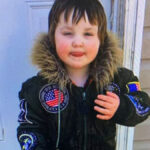Nova Scotia has many hard to pronounce village and town names. Many places find their name taken from Mik’maw, French and Gaelic. Cape Breton Island has its fair share of hard to pronounce names.
Some name pronunciations have been altered over time. Framboise is supposed to be French but is commonly known as “fram-boys”. The same goes for L’Ardoise. It is commonly pronounced “lord-ways”.
Here are our Top 10 Mispronounced Nova Scotia Places.
1) Musquodoboit – “mus-ka-dob-it”
The Nova Scotia valley which shares its name with some communities within it. The name is derived from the Mi’kmaw word Mooskudoboogwek, meaning “suddenly widening out after a narrow entrance at its mouth”.
2) Boularderie Island – “bull-awn-dree”
Boularderie Island is Nova Scotia’s second largest island after Cape Breton Island. It is 40 km long and at it’s largest about 10 km wide.
3) Ben Eoin – “ben yawn”
Ben Eoin is located about 20 minutes outside of Sydney, Nova Scotia on Route 4. The community plays host to The Lakes – Golf Club & Resort as well as Ski Ben Eoin. The name Ben Eoin, or Beinn Eòin in Scottish Gaelic, translates to “John’s Mountain”. It is named after John McNeil, a farmer who lived at the foot of Ben Eoin around 1855 or earlier.
4) Main-à-Dieu – “man-a-do”
Main-à-Dieu is a community of about 240 on Cape Breton Island and home to a large lobster fishing fleet. At the beginning of each lobster season a local parish priest holds a blessing of the fleet dockside and prays for the safety of the fishermen.
5) Havre Boucher – “har-ver bush-ay”
Havre Boucher is a small fishing and farming community located on the shore of St. George’s Bay.
6) Tatamagouche – “ta-tuh-muh-goosh“
Tatamagouche is located along the south side of Tatamagouche Bay at the mouths of the French and Waugh Rivers. Tatamagouche is derived from the Mi’kmaw term Takǔmegoochk, meaning “meeting of the waters”.
7) Framboise – “fram-boys”
Framboise is French for raspberry and is a community located on the eastern side of Cape Breton Island southwest of the Framboise River.
8) L’Ardoise – “lord-ways”
The small Cape Breton community has a rich history of French and Acadian culture. They likely disapprove of the English take on their town name.
9) Antigonish – “an-tuh-guh-nish”
Home of St. Francis Xavier University and the oldest continuous Highland games outside of Scotland. The town has a population of just over 4,000 that doubles when students arrive for classes in September.
10) Shubenacadie – “sh-oo-bin-nack-a-dee
The name for the Mi’kmaw territory in which today’s Shubenacadie is located and the origin of its name is the Mi’kmaw word Sipekne’katik. The term means “place abounding in groundnuts” or “place where the wapato grows.” Historically, the Sipekne’katik region was a large stretch of territory that covered central Nova Scotia.
Bonus) Grosses Coques – “gross-cocks”

Grosses Coques is the name of a crossroads in Digby County’s Municipality of Clare. It is named for the big clams found there.




















